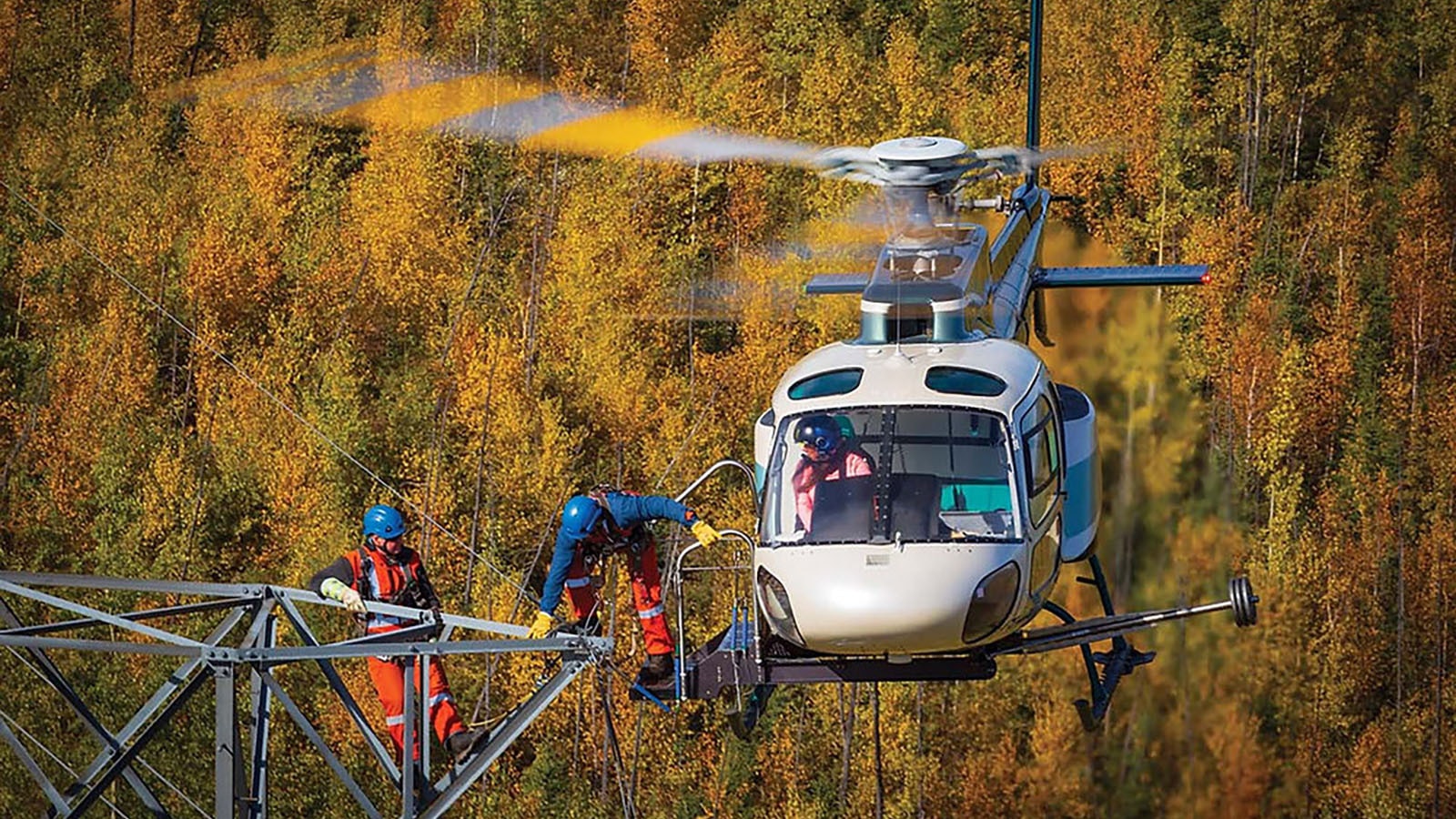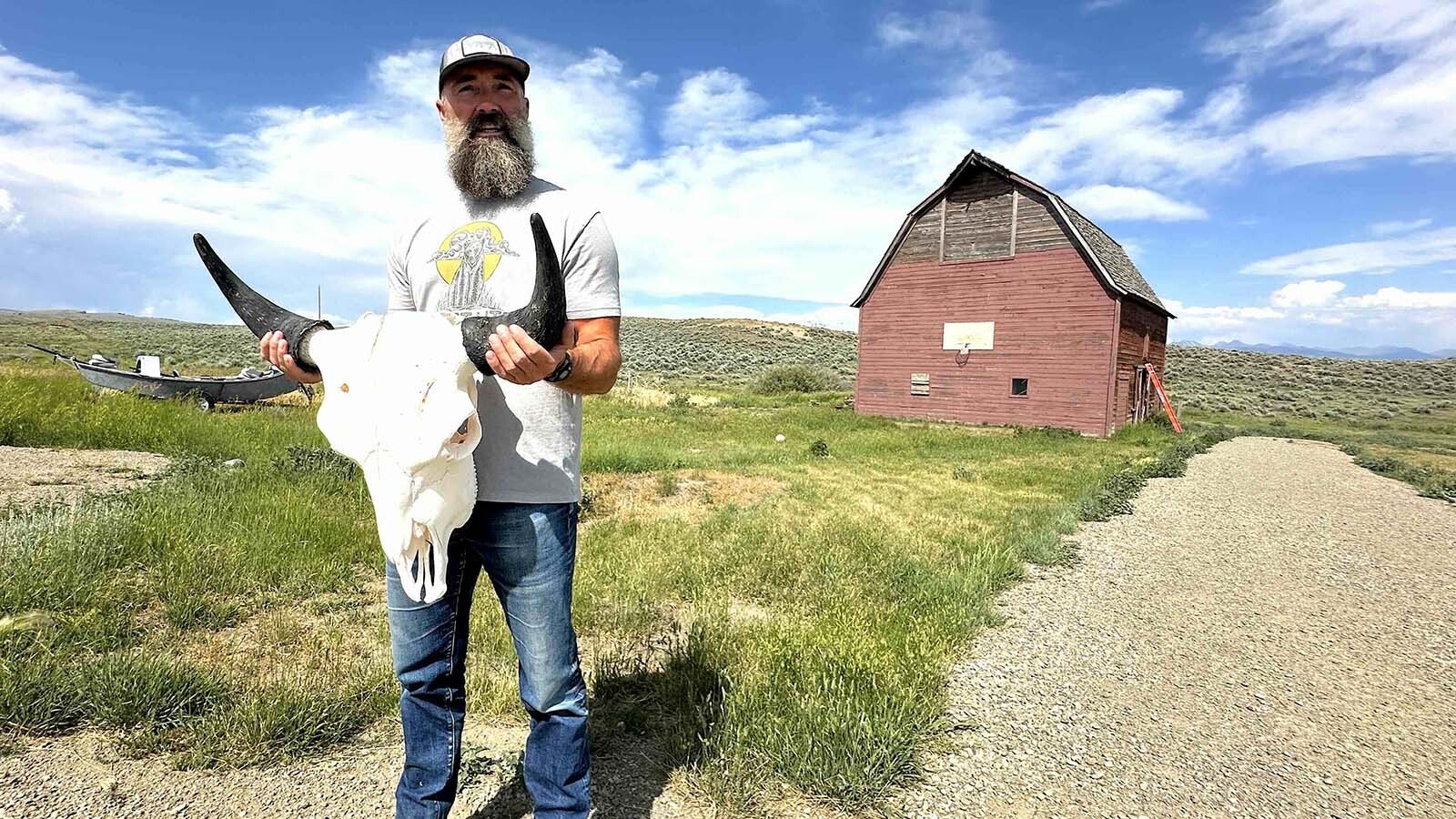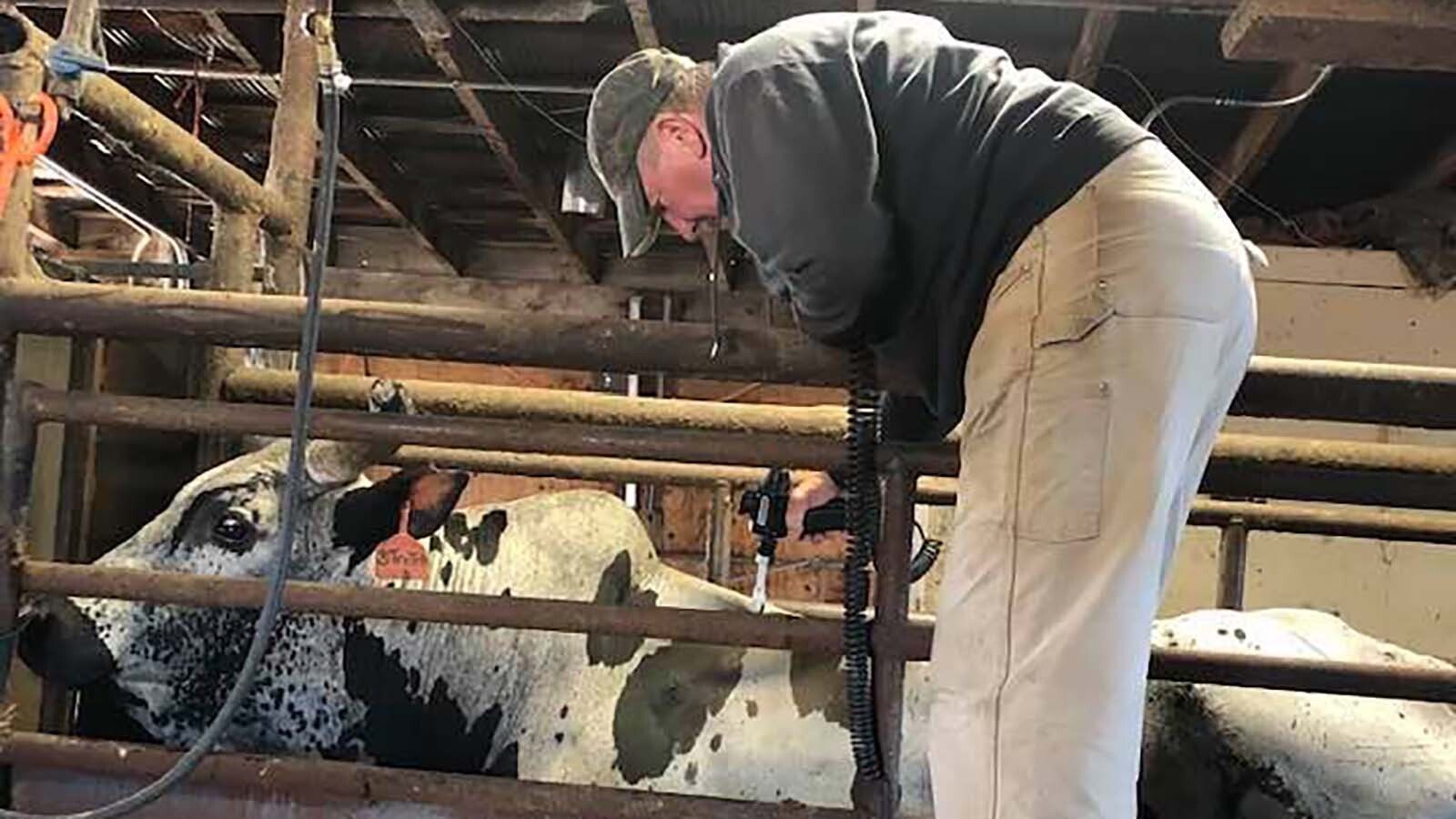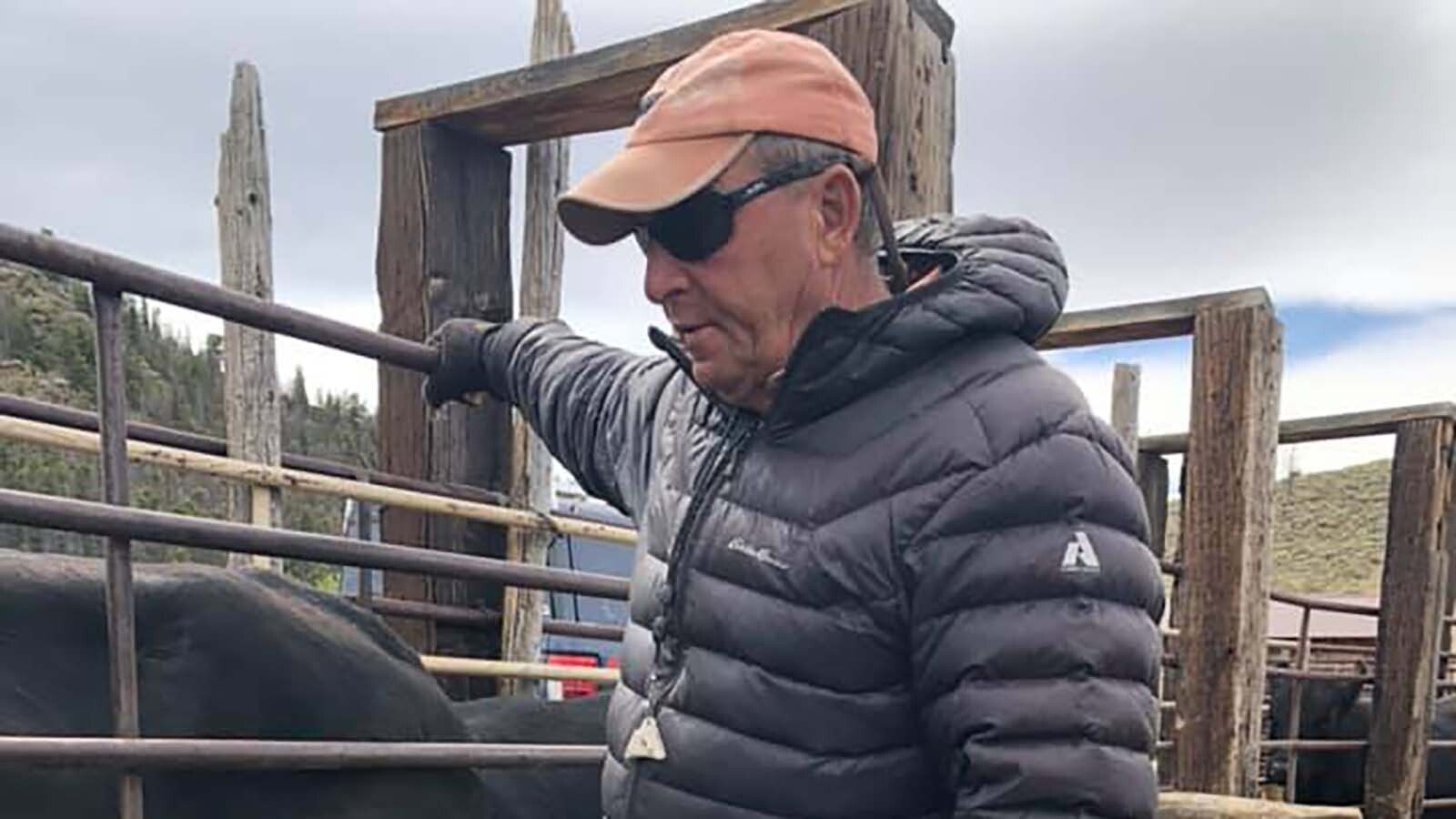When you think of living dangerously, someone like movie spy James Bond might come to mind.
But up in the Wyoming skies are men who are not part of any movie set, working a real-world job that’s every bit as dangerous as a fictitious spy could ever hope for. They’re called helicopter linemen, and they not only work on power lines that carry thousands of volts of power, they do it while dangling from a helicopter hundreds of feet in the air.
If that’s not dangerous enough, helicopter linemen might also be working with heavy tools, like chain saws, while they’re hanging from a helicopter.
“A lot of people won’t do it, like, at all,” Wyoming helicopter lineman Ray Summa told Cowboy State Daily. “A lot of people can’t do it. I mean, motion sickness and I mean, when you get into a structure that is literally your only support from ground and, you know, there could possibly be mechanical failure, it overwhelms people sometimes.”
For those who are willing to take the risk, a lineman — and being a helicopter lineman in particular — is a one-of-a-kind job.
“Being a lineman is ever-changing. There’s no limitations to where you can go. I mean, our senior vice president is a journeyman lineman for Rocky Mountain Power and PacifiCorp. So it’s unlimited,” Summa said. “And if you chase adrenaline, if you’re an adrenaline junkie and you like, you know working in really sticky situations, that’s the job you want.”
Crazy High Salaries Are Possible
Regular linemen, depending on location, can make as much as $200,000 a year if they’re willing to travel, though in Wyoming, salaries are more likely to fall in the $86,000 to $93,000 range.
Helicopter linemen for Rocky Mountain Power get an additional 7% of their salary for work above 80 feet, something that Summa admitted he’s sometimes forgotten to take advantage of when filling out his timecard.
Contractors, meanwhile, who are willing to travel and are full-time aerial linemen can make a lot more money, Summa said.
For example, Summa recently returned from a job in Riverton retraining to string “hot 230” power lines off of structures.
“You’re doing that all off the hook,” Summa said. “So you climb up the transmission structure, wooden transmission structure, and you use no equipment whatsoever. We actually make more money (for that). So I work for Rocky Mountain power, but if you had a contract company coming in to do the same thing I was doing in Riverton, they would make double what I make.”
Likewise, those willing to chase storms to fix transmission lines can make really big bucks as aerial linemen.
But they also make a significant sacrifice when it comes to family time, Summa said.
“Those guys make the first six months out of the year, they’re making double-time 24 hours a day,” he said. “That’s if you’re willing, like I said, to sacrifice your family life.”

The Most Dangerous Moment
The most dangerous moment for an aerial lineman isn’t what most would think. It’s not necessarily reaching out and touching that hot wire to work on it.
“When they clip onto the wire with the helicopter, it’s like a bird on a wire,” Summa said. “You see a bird sitting on a phase, an overhead phase (high voltage power line), and nothing happens to him.”
What’s going on here is that the bird isn’t touching the ground, or anything in contact with the ground, nor is it touching more than one wire, so there’s no circuit for the electricity to flow through. As long as that’s the situation, the bird — or in this case an aerial lineman — seemingly defies death, sitting without harm on a high-voltage power line that has more than enough power to instantly kill the moment an electrical circuit is formed.
Aerial lineman additionally wear what is called a Faraday suit, which ensures electricity never tries to flow through the worker, and they take special training every two years to learn the proper way to approach their high-flying work.
That makes the most dangerous aspect of the job what’s called line blindness.
The power lines are difficult to see while up in the sky flying around. Helicopters running into a line is the cause of 90% of all helicopter crashes involved in aerial lineman work.
“That’s why there’s people communicating on both sides,” Summa said. “You’re communicating every second. I’m calling out, or (the pilot) is calling out every second.”
Why Helicopters
Being a lineman is an incredibly dangerous job without the additional complications a helicopter adds to the mix. In fact, dozens of power line workers die every year, and the Bureau of Labor Statistics already lists lineman as one of the 10 most dangerous jobs in America.
Given all the risks, it’s fair to wonder why helicopters are used for this type of work at all.
The thing is, there are some power lines that cross remote, rugged areas that would be difficult to reach by land.
“If you’ve ever been to Key West, from like Homestead all the way down, you’ll see a giant transmission line, and I actually worked for Keys Energy for a little bit, and that entire transmission line is in the middle of the ocean, all the way to the end,” Summa said. “It branches off and goes in at Marathon Key and then down into Key West.”
The only way the line can be fixed is with aerial linemen, who are flown into position and work on a line while dangling from a helicopter.
“We also use helicopters for pulling our wire,” Summa said. “So that long line, where you see that gentleman dangling from, we’ll actually attach a conductor to that line and the helicopter flies it into the structure.”
The line gets pulled out 2 miles by helicopter, which Summa said is one of the easiest, most efficient ways to string that kind of line.
Another aspect of helicopter linework is it allows lines to be fixed without shutting down all the power.
“If there’s like three or four strands broken in the wire, we can actually go out and patch that,” Summa said. “If it’s mid-span and it’s a 500 line that’s heating, you know, half of Utah, you can’t just take it out. So you can actually get out there midspan and put a repair sleeve on that wire and fix it without killing the power.”

Renée Jean can be reached at renee@cowboystatedaily.com.





